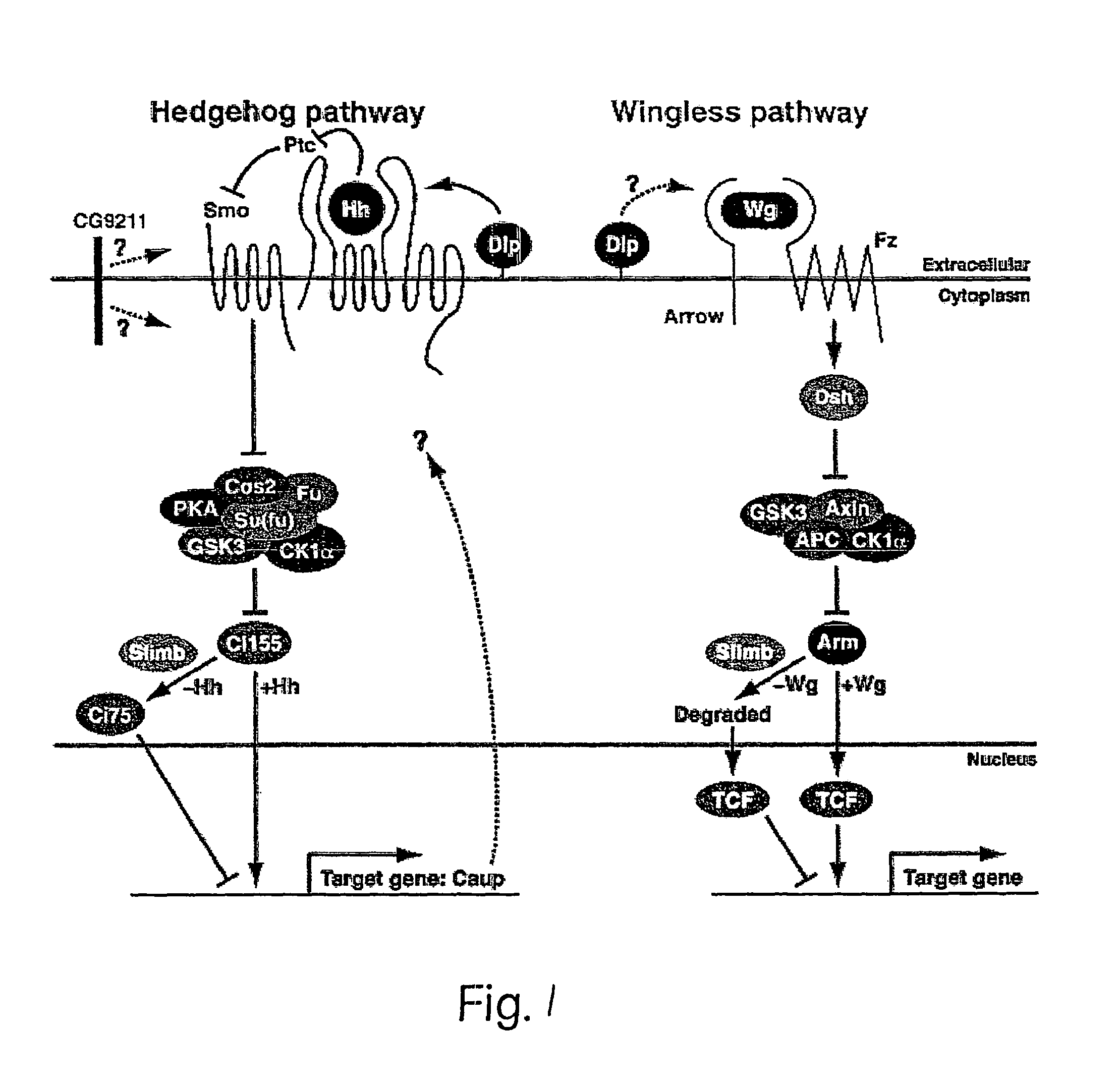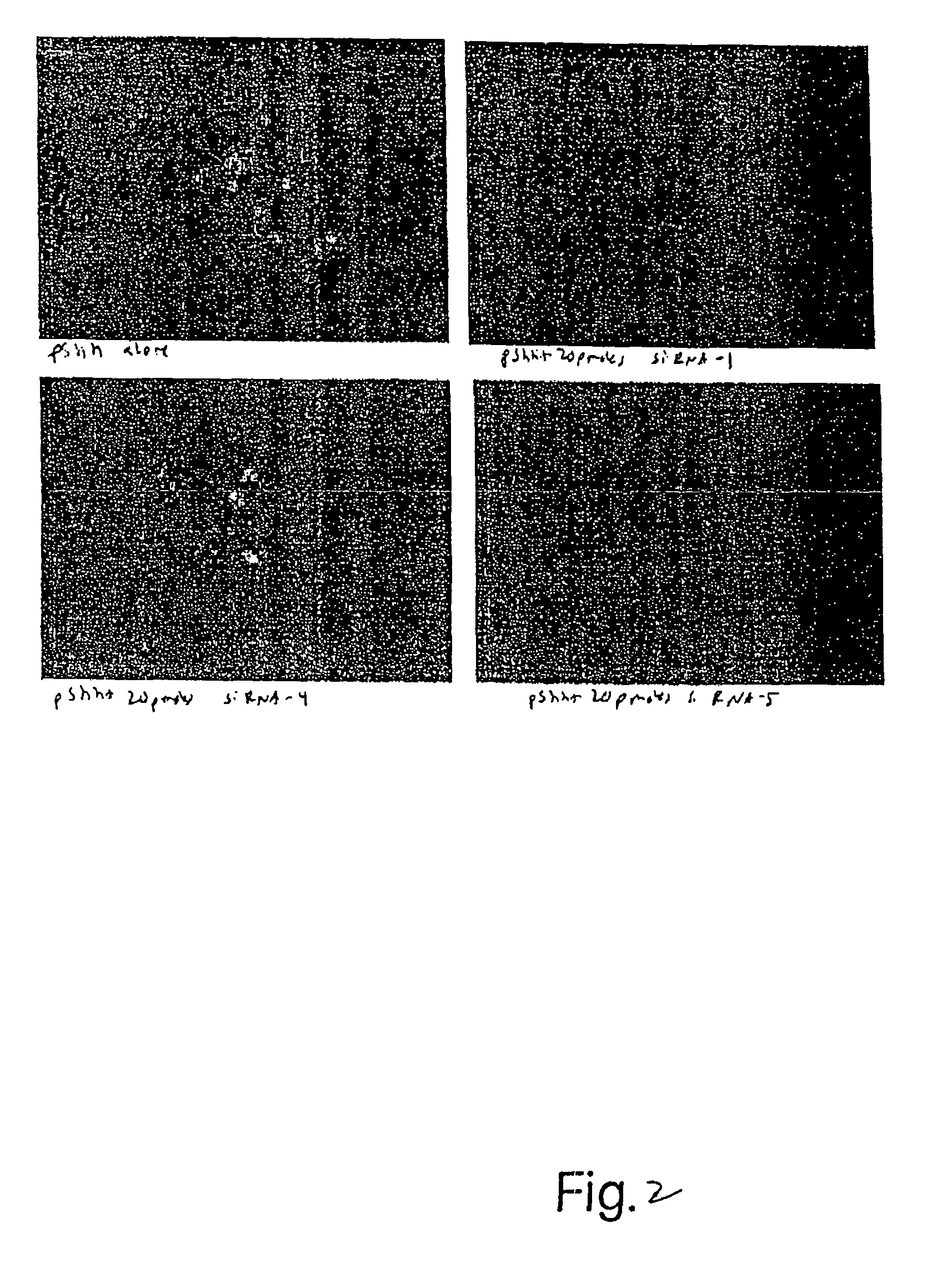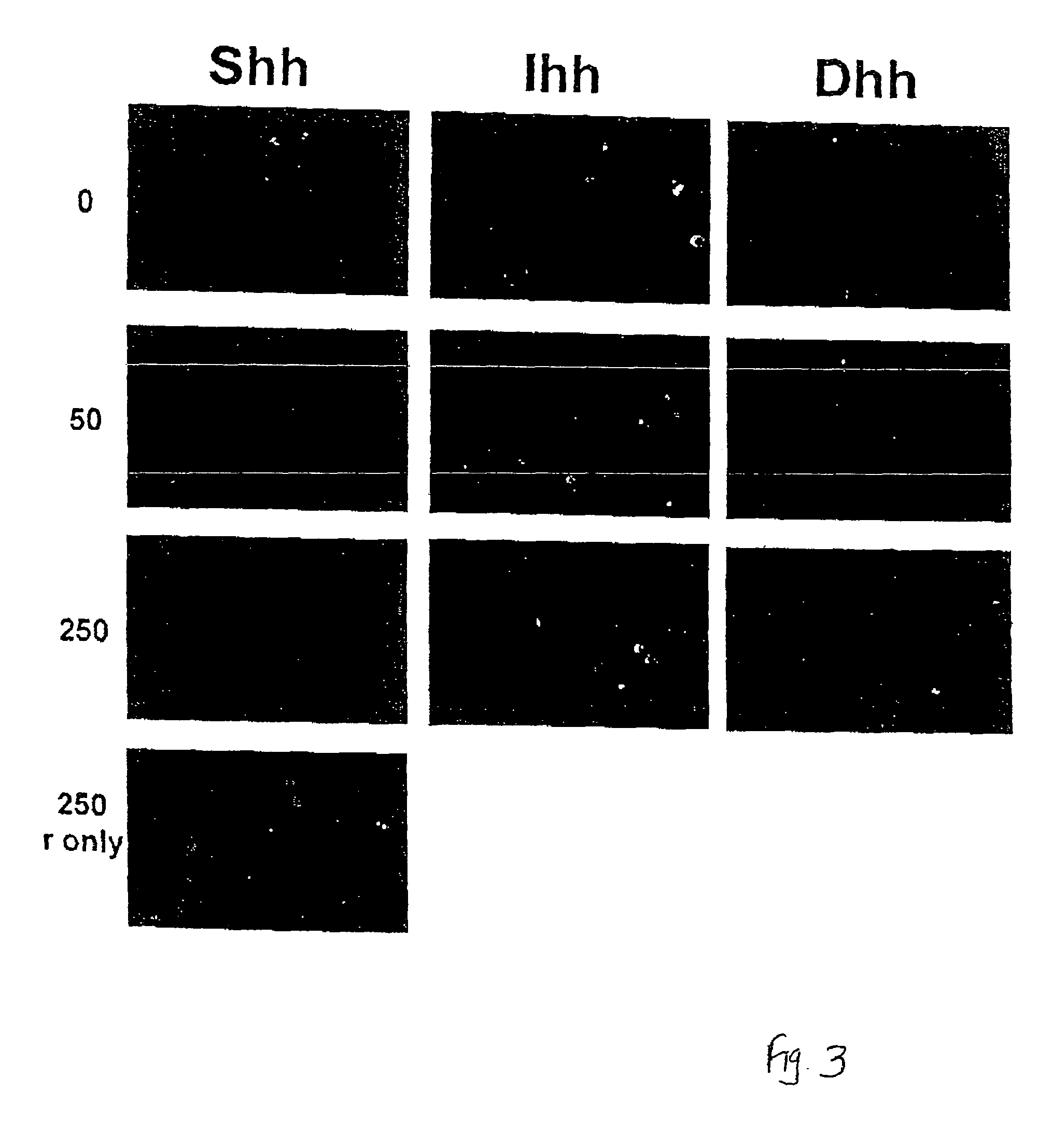RNA interference modulators of hedgehog signaling and uses thereof
a technology of hedgehog signaling and interference modulators, which is applied in the direction of cardiovascular disorders, immunological disorders, drug compositions, etc., can solve the problems of unsatisfactory proliferation, differentiation, or survival of cells, and achieve the effects of modulating proliferation, differentiation, or survival, and enhancing a particular differentiation fa
- Summary
- Abstract
- Description
- Claims
- Application Information
AI Technical Summary
Benefits of technology
Problems solved by technology
Method used
Image
Examples
example 1
Hedgehog, Lung Development and Surfactant Production
[0445]Respiratory distress syndrome results from insufficient surfactant in the alveolae of the lungs. The lungs of vertebrates contain surfactant, a complex mixture of lipids and protein that causes surface tension to rise during lung inflation and decrease during lung deflation. During lung deflation, surfactant decreases such that there are no surface forces that would otherwise promote alveolar collapse. Aerated alveoli that have not collapsed during expiration permit continuous oxygen and carbon dioxide transport between blood and alveolar gas and require much less force to inflate during the subsequent inspiration. During inflation, lung surfactant increases surface tension as the alveolar surface area increases. A rising surface tension in expanding alveoli opposes over-inflation in those airspaces and tends to divert inspired air to less well-aerated alveoli, thereby facilitating even lung aeration.
[0446]Respiratory distres...
example 2
Gli-1 Expression in Human Tumors
Hedgehog Pathway Activation in Human Tumors
[0460]Hedgehog signaling plays a causative role in the generation of basal cell carcinoma (BCC). Hedgehog signaling was analyzed to determine whether this pathway is active in other human tumors, more specifically prostate, lung and breast cancer, as well as benign prostate hyperplasia. Hedgehog proteins are known proliferative agents for a variety of cell types. Since hedgehogs have a known proliferative effect on a variety of cell types, hedgehog antagonists may be valuable therapeutics for cancers in which high level hedgehog signaling is present.
[0461]The question of hedgehog activation in the tumor types was addressed by conducting radioactive in situ hybridization experiments with gli-1, a known transcriptional effector gene of hedgehog signaling.
[0462]Briefly, sections of paraformaldehyde-fixed, paraffin-embedded tissue were cleared, re-hydrated, digested with proteinase K, acetylated and hybridized wi...
example 3
Cytogenetic and Mutational Data Suggest Hedgehog Activation Plays a Causative Role in Bladder Cancer
[0469]The cytogenetic and molecular alterations found in bladder cancer are heterogeneous. In establishing the primary, specific mutations in cancers, it is often useful to examine near-diploid cancers, which do not yet have complex, multiple chromosome changes accompanied by hyperdiploidy. Gibas et al., found monosomy of chromosome 9 in 4 out of 9 cases of transitional cell carcinoma of the bladder (Gibas et al. (1984) Cancer Research 44:1257-1264). In three of these, the karyotype was near diploid, and in one, monosomy 9 was the only abnormality observed. Therefore, monosomy of chromosome 9 may initiate malignant transformation in a subgroup of such cancers.
[0470]More evidence that this change appears as an early event was presented by two other group who reported that deletions of chromosome 9 are the only genetic changes present frequently in superficial papillary tu...
PUM
| Property | Measurement | Unit |
|---|---|---|
| temperature | aaaaa | aaaaa |
| pH | aaaaa | aaaaa |
| pH | aaaaa | aaaaa |
Abstract
Description
Claims
Application Information
 Login to View More
Login to View More - R&D
- Intellectual Property
- Life Sciences
- Materials
- Tech Scout
- Unparalleled Data Quality
- Higher Quality Content
- 60% Fewer Hallucinations
Browse by: Latest US Patents, China's latest patents, Technical Efficacy Thesaurus, Application Domain, Technology Topic, Popular Technical Reports.
© 2025 PatSnap. All rights reserved.Legal|Privacy policy|Modern Slavery Act Transparency Statement|Sitemap|About US| Contact US: help@patsnap.com



